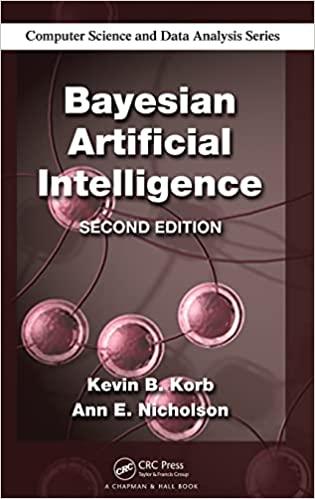Freds LISP dilemma. Fred is debugging a LISP program. He just typed an expression to the LISP
Question:
“Fred’s LISP dilemma.” Fred is debugging a LISP program. He just typed an expression to the LISP interpreter and now it will not respond to any further typing.
He can’t see the visual prompt that usually indicates the interpreter is waiting for further input. As far as Fred knows, there are only two situations that could cause the LISP interpreter to stop running: (1) there are problems with the computer hardware;
(2) there is a bug in Fred’s code. Fred is also running an editor in which he is writing and editing his LISP code; if the hardware is functioning properly, then the text editor should still be running. And if the editor is running, the editor’s cursor should be flashing. Additional information is that the hardware is pretty reliable, and is OK about 99% of the time, whereas Fred’s LISP code is often buggy, say 40% of the time.5 1. Construct a Belief Network to represent and draw inferences about Fred’s dilemma.
First decide what your domain variables are; these will be your network nodes.
Hint: 5 or 6 Boolean variables should be sufficient. Then decide what the causal relationships are between the domain variables and add directed arcs in the network from cause to effect. Finanly, you have to add the conditional probabilities for nodes that have parents, and the prior probabilities for nodes without parents. Use the information about the hardware reliability and how often Fred’s code is buggy. Other probabilities haven’t been given to you explicitly;
choose values that seem reasonable and explain why in your documentation.
2. Show the belief of each variable before adding any evidence, i.e., about the LISP visual prompt not being displayed.
3. Add the evidence about the LISP visual prompt not being displayed. After doing belief updating on the network, what is Fred’s belief that he has a bug in his code?
4. Suppose that Fred checks the screen and the editor’s cursor is still flashing.
What effect does this have on his belief that the LISP interpreter is misbehaving because of a bug in his code? Explain the change in terms of diagnostic and predictive reasoning.
Step by Step Answer:

Bayesian Artificial Intelligence
ISBN: 9781439815915
2nd Edition
Authors: Kevin B. Korb, Ann E. Nicholson






